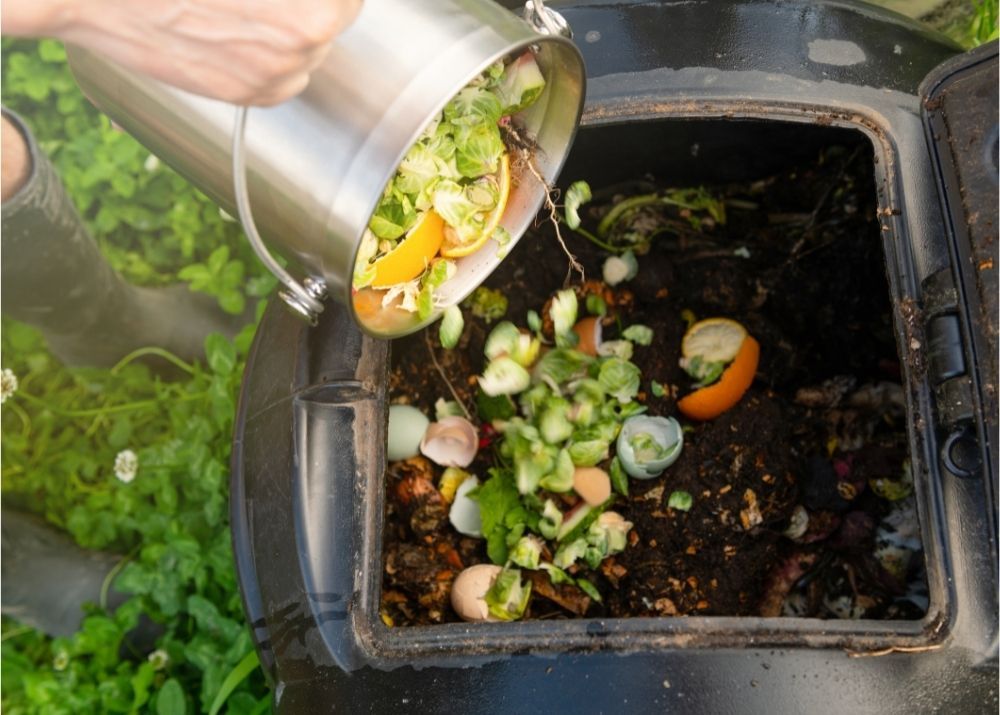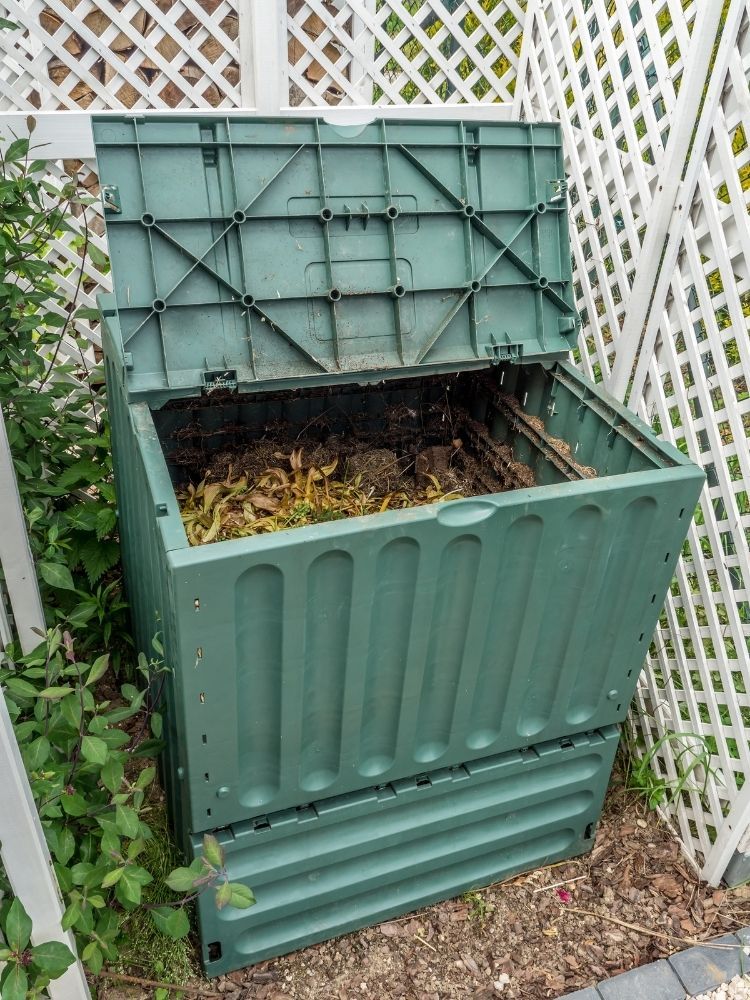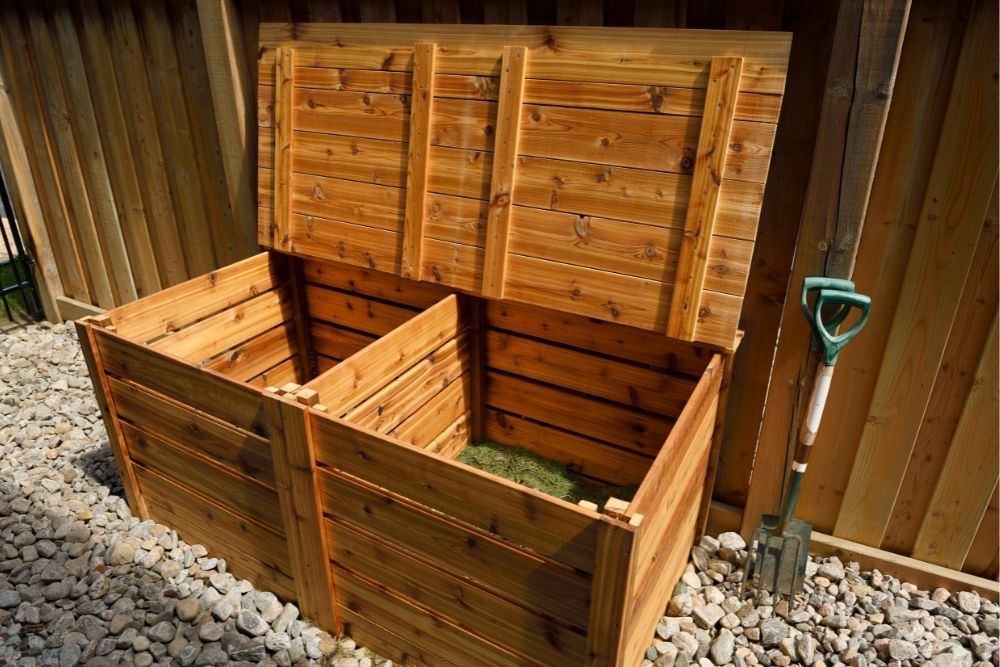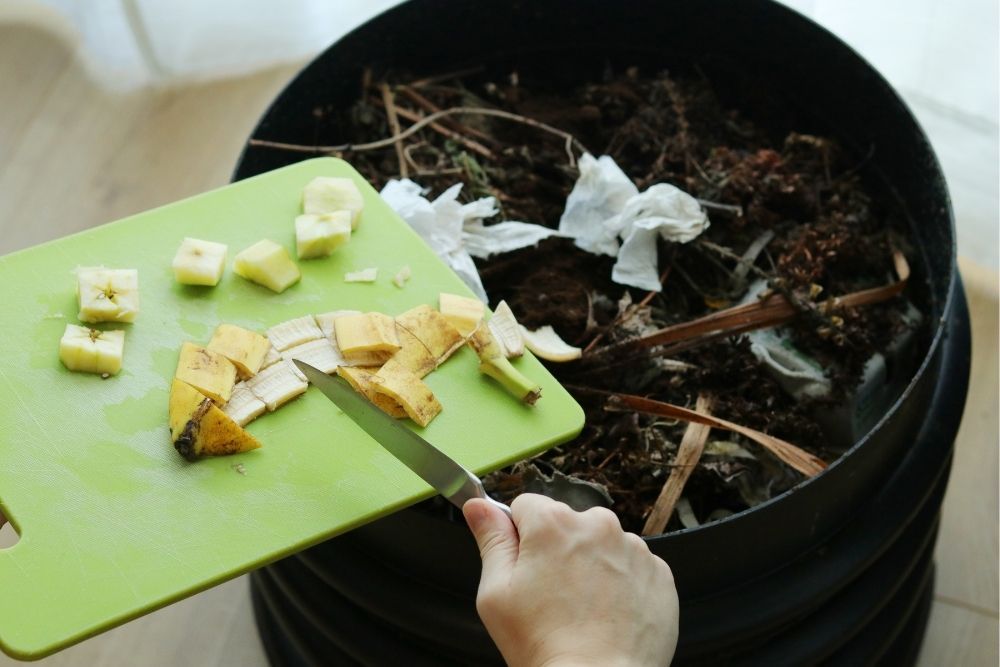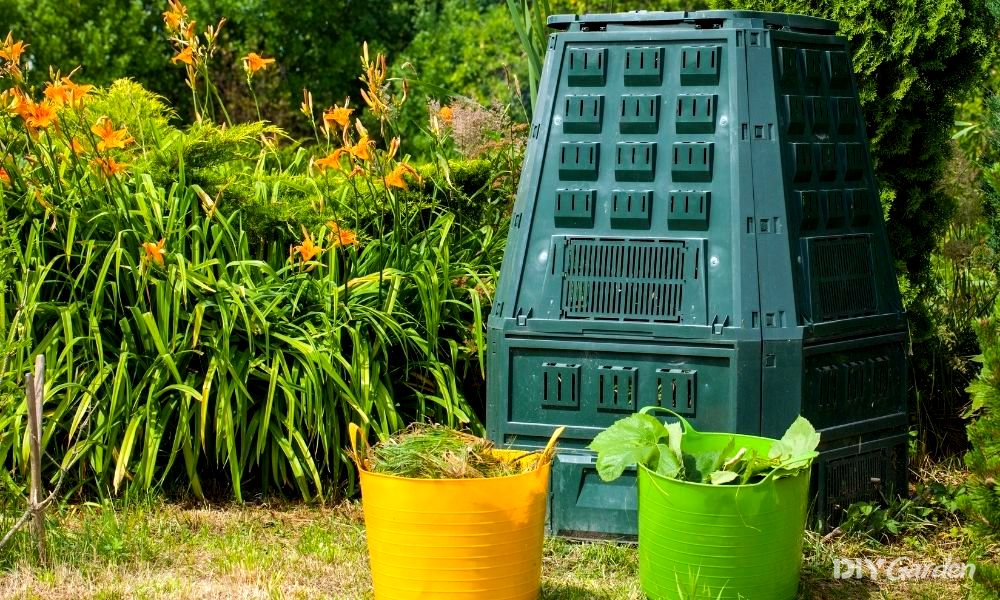
Compost is a nutritious haven for plants. It improves soil structure and moisture levels, balances soil pH, and hinders the spread of plant diseases.
When considering setting up a compost bin, it’s easy to become overwhelmed with questions. Does compost need sun? Does it need wind? Does it matter where I place my compost bin? Can I put it indoors?
Here, we answer all your questions.
Optimal Composting Conditions
Some conditions will speed up the breakdown of organic matter, whilst others will slow it down. It’s essential to get it right, so your plants get the most out of your hard work.
Let’s talk about whether your compost needs exposure to:
- Sunlight
- Wind
Exposure to Sunlight
There are thousands of tiny bacteria and fungi in your compost. As horrifying as that sounds, it’s a good thing!
Compost is warmed up when hit by the sun. The bacteria and fungi love warmth, so they work quicker when your compost is toasty. They work through the organic material, breaking it down to nutritious compost.
So do you place your compost bin or your sun-loving plants in your garden’s sunniest spot? The plants come first. You want to keep your plants happy and healthy, so your compost bin comes second.
Find another sunny spot, and place your compost heap there. Don’t worry too much about shade as it’s not all bad – your compost will retain its moisture better, stopping it from drying out.
Exposure to Wind
When you turn your compost heap using a fork or spade, you’re providing lovely aeration. Air is another essential component for successful decomposition.
Packing your compost down too much is a big no-no because it stops airflow to the busiest composting area – the centre!
That leads to the question…what about wind? If compost loves air so much, surely exposure to wind can only be a good thing?
Unfortunately, no. Even if it provides more aeration to your compost heap, it quickly dries it out. If your garden is plagued with strong winds 24/7, keep plastic sheeting close by. If you notice your compost is beginning to dry out, give it a sprinkling of water, then cover it with plastic sheeting.
Compost Bin Placement
Half the battle of composting is knowing where to put a compost bin. You don’t want to attract unwanted visitors like rats and mice, and you don’t want it toppling over. So, let’s talk about:
- Proximity to the house
- Composting surface (concrete, decking, gravel, and paving)
- Indoor composting
Proximity to the House
No-one wants to run a marathon to dispose of their organic material in their compost heap. Having to weather the wind and rain is no picnic, either!
As convenient as it may seem to keep your compost bin just outside your back door, don’t do it! Compost heaps should be kept at least 10ft from your house. Facing it away from your home is also a must.
There are many reasons to keep your compost heap well away from your house:
1. Smell
If you’re composting correctly, it shouldn’t be smelly (see here for what you can and can’t compost). But for us novice composters, getting it right on the first try isn’t easy. Although you can’t always control how well your compost heap is working, you can control where you place it.
When you chuck food waste like banana peels and garden materials like weeds on top of your compost, there may be an initial smell as they rot and begin the degradation process. Having the smell of rotting food wafting into your house isn’t ideal.
2. Airflow
Placing your compost close to your house can close off the sides of the heap. This means it’ll only get airflow to the top and/or front rather than on all sides. As we’ve already covered, compost needs sufficient airflow.
Avoid placing your compost heap up against a wall, fence, or building at all, as this will hinder the breakdown of your organic matter.
3. Appearance
Let’s face it, compost bins don’t always look pretty. They’re often filled with rotting food, and their appearance isn’t elegant.
As outdoor dining is usually within close proximity to the house, it’s better to keep your compost bin well away. You don’t want your dinner guests staring at a compost heap all night, do you?
You could put screening up to hide it away, but it’s best to move it altogether.
Composting Surface
When thinking about placing your composting bin, consider the surface. Is it level or sloped? Is it solid and durable, or does it have some give?
Most of us have concrete, decking, paving or gravel somewhere in our back gardens. Here, we discuss the pros and cons of composting on each.
Composting on Concrete
If the best place to position your compost bin is by your general waste area, it’ll likely be on concrete.
But concrete isn’t ideal for compost. For starters, if you don’t own the house, we wouldn’t recommend composting on concrete. It quickly stains the ground, so your landlord won’t be best pleased!
Living in the UK, you may find your compost heap quickly becomes too wet. This is caused by the never-ending rain that can’t drain away. You can end up with foul smelling compost or slime accumulation.
Try introducing gaps underneath your compost heap so excess water can drain away. Or, if you suspect your heap is getting too wet, cover it with plastic sheeting.
Additionally, your compost heap benefits from bugs like worms and insects. When placed on concrete, your heap is severely deprived of these. To counteract this, dig around in your garden for bugs and put them in your compost heap.
Composting on Decking or Paving
Compost bins can end up being incredibly heavy, so think about the strength and durability of your decking/paving. If it’s brand new and super strong, great!
If it’s older decking or paving that’s a bit withered and weak underfoot, best to avoid placing your compost bin on it.
Just like with concrete, compost will stain your decking and paving. A self-contained compost bin can solve this issue, but it’s not always recommended due to insufficient airflow. But if you’re set on putting your compost heap on decking/paving, put a raised bed down first.
For a more aesthetically pleasing compost bin on decking, use leftover decking boards. Use decking sealant to seal the decking boards together, then line it with strong plastic sheeting. This will protect the panels and reduce wood rot.
Fill your raised bed with soil, then add drainage holes in your plastic sheeting for excess water to drain into the soil.
Composting on Gravel
Gravel is a great surface to place your compost heap. It allows water to drain away and insects to creep in because of the gaps between the stones.
To stop your compost heap staining your gravel, place a plastic sheet down first. Cut some holes into this for drainage. Additionally, if you’ve laid a membrane underneath your gravel, cut several holes in this too.
Composting on Wire Mesh
For me, the prospect of unwanted vermin like rats and mice running out of my compost heap when I walk past is a thing of nightmares. To avoid this, lay a wire mesh underneath.
Cut a small hole of around 1 inch into the bottom of your bin to allow for drainage. Then, place wire mesh over the hole so the water can still escape, but little mammals can’t enter!
Indoor Composting
By “indoor composting,” we don’t mean a giant compost bin or heap placed in your living room.
If you’re tired of traipsing across your garden to get to your compost bin, or you live in a flat where having a compost bin just isn’t possible, consider having a small composting system in your kitchen.
That way, you can collect a good amount of food waste even if you don’t have a garden. Or, if you have a garden, you can dispose of your waste on a dry day, rather than having to suffer the British weather every single day.
You can purchase composting systems that have charcoal filters. These prevent smells from escaping, and fruit flies from taking over your residence. Or, you can use a worm bin. You can compost to your heart’s content with this incredible indoor composting alternative!
Let the Composting Begin!
Now you know where’s best to place your compost bin and where’s most certainly not, you can get composting. Remember to subject your compost heap to lots of sunlight whilst reducing wind exposure.
Place your compost away from your house to avoid horrible sights and smells and give it the airflow it needs. Take the necessary precautions if placing your compost heap on concrete, paving, decking, or gravel. And to avoid vermin, add wire mesh!
